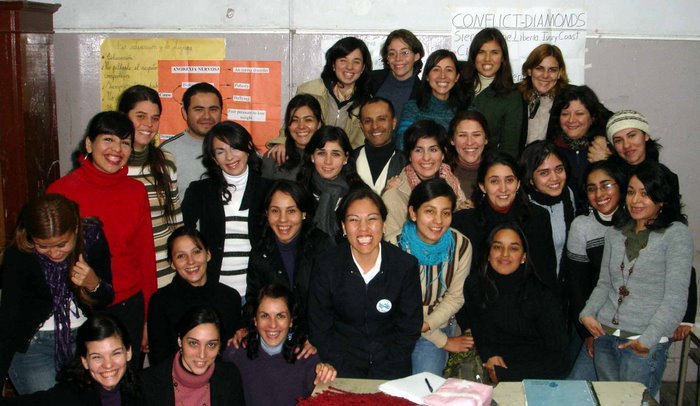What is a portfolio?
A portfolio is a purposeful collection of student work that exhibits the student's efforts, progress, and achievements in one or more areas of the curriculum. It should represent a selection of students' best work or best efforts, student-selected samples of work experiences related to outcomes being assessed, and documents according growth and development toward mastering identified outcomes.
Paulson, F.L. Paulson, P.R. and Meyer, CA. (1991, February). "What Makes a Portfolio a Portfolio?" Educational Leadership, pp. 60-63.
Key Characteristics of Portfolio Assessment
- A portfolio is a form of assessment that students do together with their teachers.
- A portfolio is not just a collection of student work, but a selection - the student must be involved in choosing and justifying the pieces to be included.
- A portfolio provides samples of the student’s work which show growth over time. By reflecting on their own learning (self-assessment), students begin to identify the strengths and weaknesses in their work. These weaknesses then become improvement goals.
- The criteria for selecting and assessing the portfolio contents must be clear to the teacher and the students at the outset of the process.
- The entries in an EFL portfolio can demonstrate learning and growth in all language domains/skills, or can focus on a specific skill such as appreciation of literature, or writing.
Essential Elements of the Portfolio
It is important to include all of the following:
- Cover Letter “About the author” and “What my portfolio shows about my progress as a learner” (written at the end, but put at the beginning). The cover letter summarizes the evidence of a student’s learning and progress.
- Table of Contents with numbered pages.
- Entries - both core (items students have to include) and optional (items of student’s choice). The core elements will be required for each student and will provide a common base from which to make decisions on assessment. The optional items will allow the folder to represent the uniqueness of each student.
- Students can choose to include “best” pieces of work, but also a piece of work which gave trouble or one that was less successful, and give reasons why.
- Dates on all entries, to facilitate proof of growth over time.
- Drafts of aural/oral and written products and revised versions, i.e. first drafts and corrected/revised versions.
- Reflections can appear at different stages in the learning process (for formative and/or summative purposes.) For each item - a brief rationale for choosing the item should be included. This can relate to students’ performance, to their feelings regarding their progress and/or themselves as learners.
Students can choose to reflect upon some or all of the following:
i. What did I learn from it?
ii. What did I do well?
iii. Why (based on the agreed teacher-student assessment criteria) did I choose this item?
iv. What do I want to improve in the item?
v. How do I feel about my performance?
vi. What were the problem areas?
Adapted from http://www.anglit.net/main/portfolio/default.html
Assessment
Criteria for a finished portfolio might include several of the following:
- Thoughtfulness (including evidence of students' monitoring of their own comprehension, metacognitive reflection, and productive habits of mind).
- Growth and development in relationship to key curriculum expectancies and indicators.
- Understanding and application of key processes.
- Completeness, correctness, and appropriateness of products and processes presented in the portfolio.
- Diversity of entries (e.g., use of multiple formats to demonstrate achievement of designated performance standards).
Folder vs. Portfolio
Your folder is a collection of your class work. It should include the following documents:
- Class Notes + homework
- Handouts: Texts & Other documents
> Writing: rough drafts, sketches, works-in-progress, and final products.
> Grammar
> Literary Elements (Short Stories)
> Songs and any other handout
- Journal Themes: Those given by the teacher or collected by the students
- Tests & Quizzes: checked by your teacher and corrected, revised, or rewritten by you.






No comments:
Post a Comment